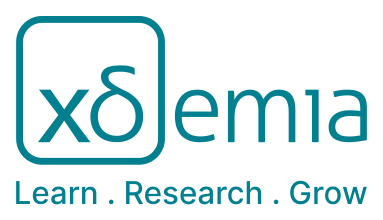Concept of Smart city and Smart street lighting technology
9 Enrollments Level : BasicRelevance
Street lighting systems emerged to reduce crime, create a more attractive environment, and thus help attract new citizens and businesses to the city, allowing it to grow and prosper further. At various times, different Light sources were used, starting with oil and gas lamps, then moving to various electrical lights, and most recently, utilising 21st-century lighting technology – Light-Emitting Diodes. Also, the evolution of power electronics, namely LED drivers, their dimming capabilities, makes it possible to apply new regulation methods called “dimming”, thus, by controlling current/power, it is also possible to control the light output. By integrating information and communication technologies (ICT), sensors, it was possible to create even more complex control systems within the city, enabling to control not a whole street, but an individual lighting pole. The integrated communication technologies were exploring possibilities to add new functions in different application areas, and this includes the smart lighting system as a core part of the smart city concept, as explained in more detail in this course.
Abstract
Historically, lighting systems are placed across the city streets, connected by power cables in very long lines, becoming a very specific city infrastructure network that nowadays can be used in various new ways. By replacing conventional lighting systems with intelligent, sensor-driven solutions, cities can achieve significant energy savings, reduce operational costs, and enhance public safety. Smart street lighting systems not only adapt to real-time environmental conditions but also serve as a foundation for broader smart city initiatives, enabling data collection, analytics, and integration with other urban services, becoming a part of a new concept called a Smart City. This combines the latest developments both in hardware and software technologies, incorporating also the Internet of Things (IoT), data collection, and real-time communications, to improve and create even new city services.
This course sets the background for understanding the relevance of smart street lighting within the larger context of smart urban ecosystems, making it a critical area of study for urban planners, engineers, policy-makers, and technology enthusiasts alike.
Learning Outcomes
The learner differentiates smart lighting systems from the broader smart city concept in the context of historical developments in control and electrical wiring solutions at the city level.
The learner identifies and selects the core components of smart street lighting systems (e.g. sensors, communication networks, IoT integration, and software) in the context of a real-life urban street example.
The learner assesses the sustainability impact of smart street lighting in the context of energy efficiency, cost savings, and environmental benefits using a calculation-based approach.
The learner evaluates case studies and best practices of smart street lighting implementation in the context of urban infrastructure and real-world applications.
Prior Knowledge
This course initially is intended for EQF level 6 students, but is also suitable for a wider audience, designed as an introductory course to understand the basic concept of smart street lighting, giving insight into history and evolution towards the smart city concept, and explaining key elements of such a system.
Keywords
- LED lighting
- Smart city lighting
- street profiles
- lighting system elements
Elements
1. About this Building Block
About this Building Block
When starting this BuildingBlock, you can use this learning material usage sequence:
Reader 1 - History of street lighting systems
Podcast - Audio1_History_Jan van der Heyden and Amsterdam's Street Lighting Revolution (optional)
Video Lecture 1 - Architectures of street lighting systems
Video Lecture 2 - Concept of Smart city and Smart street lighting technology
Reader 2 - Concept and architectures of Smart City and Smart Lighting Systems
Take a quiz for self-assessment
Use exercise (homework) for practical calculations
2. Reader
Reader 1 - History of Lighting Systems
Reader 1 gives an overview of the evolution of lighting systems. After reading Learning Outcome 1 (per Descriptor) is completed.
3. Podcasts
Jan van der Heyden and Amsterdam's Street Lighting Revolution
Jan van der Heyden and Amsterdam's Street Lighting Revolution
Complementary for Reader 1
4. Presentations
Lecture 1 - Architectures of street lighting systems
Lecture 1 - Architectures of street lighting systems
Introduction to the main elements of street lighting systems and architectures.
Content:
Street lighting system overview
Light sources to be regulated
Functions to be delivered
Outdoor / Street profiles and layouts
Existing architectures
Newarchitecturesnowadays
Lecture 2 - Concept of Smart city and Smart street lighting technology
Introduction to Smart city and Smart street lighting systems.
Content:
Street lighting control and management system (CMS)
Industry examples on the market
(Optional) Use homework to find information, analyse and evaluate.
5. Video and knowledge clips
LITES project video
LITES project video
This was one of the first Smart Street Lighting systems, created in EU. Video visualises the project istelf, and how the final installed system works using movement detection sensors, on-line dimming in PilotSites.
The link to Youtube is given in the text file.
6. Exercises
Homework 1 - Self-Assessment
The Word document gives the Task and an Example of analysis. Further PDF documents are saved as articles from the Smart Cities World webpage as useful literature and example.
7. Self-assessments
Quizz fo self-assesement (ALL Building Block material)
Quizz fo self-assesement (ALL Building Block material)
